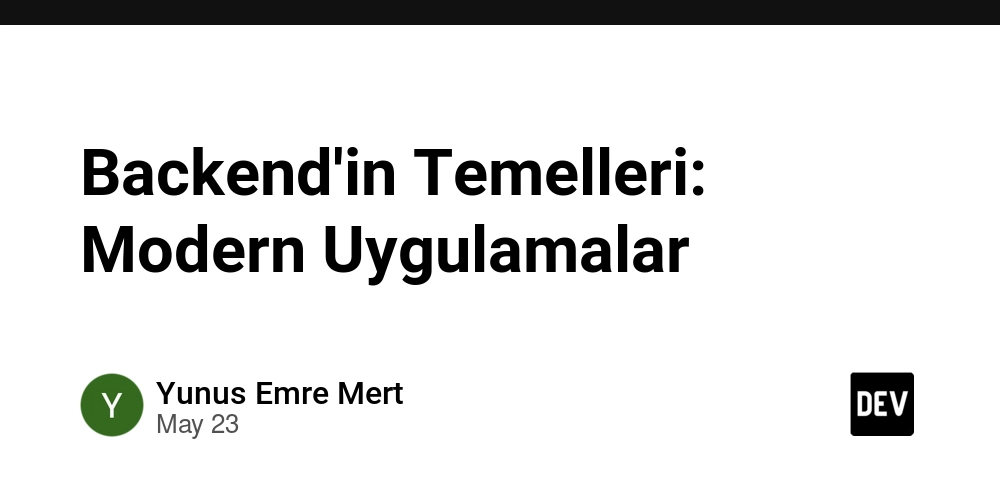Why is the Output Order Reversed in My Hello World Driver?
As you delve into the world of device drivers in Linux, you may find yourself writing simple modules such as a 'Hello World' driver to familiarize yourself with the kernel's mechanisms. However, if you encounter behavior where the output from your module's destructor is displayed before the constructor's output in the system log, it can be perplexing. In this article, we will explore the likely reasons behind this order and provide some insights into how Linux kernel modules operate. Understanding Linux Kernel Modules and Their Lifecycle Before jumping to the issue, let's briefly cover how modules are structured and their lifecycle events. A kernel module goes through the following phases: Loading: When you load a module, the module_init() function is executed first. This is where you can initialize resources and settings needed by your driver. Operational: Once loaded, the module can interact with the kernel and other modules or hardware. Unloading: When you unload a module via rmmod, the module_exit() function is called to clean up. Understanding these phases is critical as it sets the stage for understanding the log output order. Why Is the Order Reversed? It's common to expect that the constructor (initialization function) output appears before the destructor (cleanup function). However, in your case, you see the destructor's output before the constructor's. This can typically occur due to the following reasons: Module Loading/Unloading Timing: If the module is unloaded before the kernel has an opportunity to log the initialization message, the order can seem reversed in the dmesg output. When you run sudo dmesg -c, it clears the current log buffer. If you do not timely check the logs after loading and unloading the module, you might miss the initialization message. Kernel Log Buffer Behavior: The kernel log buffer can display messages in seemingly arbitrary order based on how they are queued. It's also possible that the destructor is executed during an operation that preempts the log from displaying the initialization message accurately. Ensure that you load the module, check the logs immediately, and then uninstall the module to avoid losing the logging sequence. Real-time Scheduler: Depending on the scheduler and system load, the module unloading can preempt the logging process, leading to a confusing output order. Improving Your Code with Logging Checks To troubleshoot or ensure that you capture the outputs in the expected sequence, you can modify your code to include delays or checks. Consider adding some additional logging or conditional waits right before the exit function is called. #include #include #include #include // Include delay header MODULE_LICENSE("GPL"); MODULE_DESCRIPTION("My first driver code"); static __init int module_init_alias(void) { pr_info("Hello world! This is my first driver code\n"); return 0; } static __exit void module_exit_alias(void) { pr_info("This is the destructor - waiting a moment...\n"); msleep(2000); // Sleep for two seconds pr_info("Cleanup done!\n"); } module_init(module_init_alias); module_exit(module_exit_alias); Conclusion It’s essential to grasp how the Linux kernel processes logging. Understanding the timing and order in which messages appear in dmesg can provide insight into how your driver operates in the broader system context. The reversed order you experience typically stems from the ways in which kernel module loading and unloading are initiated. You can further debug by implementing logging checks or reviewing the timing of your module's operations. Frequently Asked Questions 1. How can I view kernel logs without clearing them? You can view kernel logs by simply executing dmesg without the -c flag. This shows the entire log without clearing existing entries. 2. What is the purpose of pr_info in kernel modules? pr_info is a macro provided by the kernel for logging informational messages. It's widely used to print debugging messages while developing kernel modules. 3. Can the order of outputs affect my module's functionality? While the order of logging doesn't usually affect functionality, it’s essential for debugging and understanding the flow within your module. Keeping track of initialization and cleanup messages can help identify anomalies in the module's behavior.

As you delve into the world of device drivers in Linux, you may find yourself writing simple modules such as a 'Hello World' driver to familiarize yourself with the kernel's mechanisms. However, if you encounter behavior where the output from your module's destructor is displayed before the constructor's output in the system log, it can be perplexing. In this article, we will explore the likely reasons behind this order and provide some insights into how Linux kernel modules operate.
Understanding Linux Kernel Modules and Their Lifecycle
Before jumping to the issue, let's briefly cover how modules are structured and their lifecycle events. A kernel module goes through the following phases:
-
Loading: When you load a module, the
module_init()function is executed first. This is where you can initialize resources and settings needed by your driver. - Operational: Once loaded, the module can interact with the kernel and other modules or hardware.
-
Unloading: When you unload a module via
rmmod, themodule_exit()function is called to clean up.
Understanding these phases is critical as it sets the stage for understanding the log output order.
Why Is the Order Reversed?
It's common to expect that the constructor (initialization function) output appears before the destructor (cleanup function). However, in your case, you see the destructor's output before the constructor's. This can typically occur due to the following reasons:
-
Module Loading/Unloading Timing: If the module is unloaded before the kernel has an opportunity to log the initialization message, the order can seem reversed in the
dmesgoutput.- When you run
sudo dmesg -c, it clears the current log buffer. If you do not timely check the logs after loading and unloading the module, you might miss the initialization message.
- When you run
-
Kernel Log Buffer Behavior: The kernel log buffer can display messages in seemingly arbitrary order based on how they are queued. It's also possible that the destructor is executed during an operation that preempts the log from displaying the initialization message accurately.
- Ensure that you load the module, check the logs immediately, and then uninstall the module to avoid losing the logging sequence.
-
Real-time Scheduler: Depending on the scheduler and system load, the module unloading can preempt the logging process, leading to a confusing output order.
Improving Your Code with Logging Checks
To troubleshoot or ensure that you capture the outputs in the expected sequence, you can modify your code to include delays or checks. Consider adding some additional logging or conditional waits right before the exit function is called.
#include
#include
#include
#include // Include delay header
MODULE_LICENSE("GPL");
MODULE_DESCRIPTION("My first driver code");
static __init int module_init_alias(void) {
pr_info("Hello world! This is my first driver code\n");
return 0;
}
static __exit void module_exit_alias(void) {
pr_info("This is the destructor - waiting a moment...\n");
msleep(2000); // Sleep for two seconds
pr_info("Cleanup done!\n");
}
module_init(module_init_alias);
module_exit(module_exit_alias);
Conclusion
It’s essential to grasp how the Linux kernel processes logging. Understanding the timing and order in which messages appear in dmesg can provide insight into how your driver operates in the broader system context. The reversed order you experience typically stems from the ways in which kernel module loading and unloading are initiated. You can further debug by implementing logging checks or reviewing the timing of your module's operations.
Frequently Asked Questions
1. How can I view kernel logs without clearing them?
You can view kernel logs by simply executing dmesg without the -c flag. This shows the entire log without clearing existing entries.
2. What is the purpose of pr_info in kernel modules?
pr_info is a macro provided by the kernel for logging informational messages. It's widely used to print debugging messages while developing kernel modules.
3. Can the order of outputs affect my module's functionality?
While the order of logging doesn't usually affect functionality, it’s essential for debugging and understanding the flow within your module. Keeping track of initialization and cleanup messages can help identify anomalies in the module's behavior.











































































































































































![[The AI Show Episode 156]: AI Answers - Data Privacy, AI Roadmaps, Regulated Industries, Selling AI to the C-Suite & Change Management](https://www.marketingaiinstitute.com/hubfs/ep%20156%20cover.png)
![[The AI Show Episode 155]: The New Jobs AI Will Create, Amazon CEO: AI Will Cut Jobs, Your Brain on ChatGPT, Possible OpenAI-Microsoft Breakup & Veo 3 IP Issues](https://www.marketingaiinstitute.com/hubfs/ep%20155%20cover.png)



































































































































































































































































_incamerastock_Alamy.jpg?width=1280&auto=webp&quality=80&disable=upscale#)
_Brain_light_Alamy.jpg?width=1280&auto=webp&quality=80&disable=upscale#)






























































































![Nothing Phone (3) has a 50MP ‘periscope’ telephoto lens – here are the first samples [Gallery]](https://i0.wp.com/9to5google.com/wp-content/uploads/sites/4/2025/06/nothing-phone-3-telephoto.jpg?resize=1200%2C628&quality=82&strip=all&ssl=1)























































































